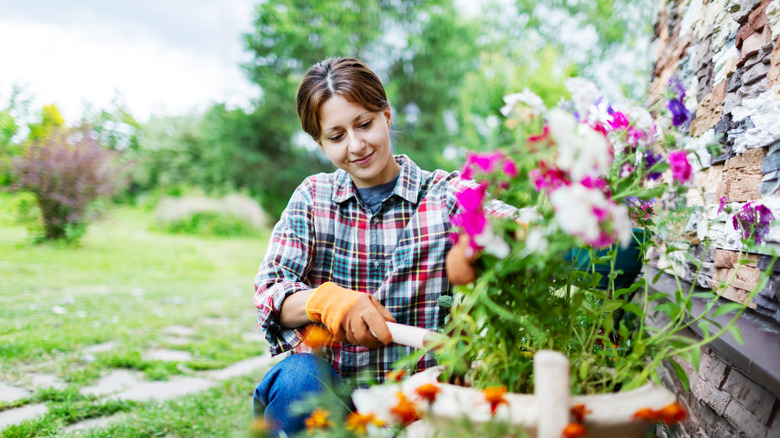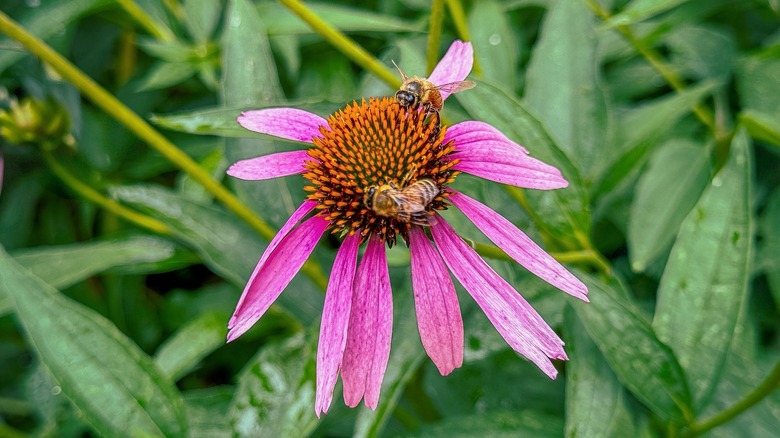The Vital Reason To Add Some Late-Blooming Flowers To Your Garden
As summer comes to an end each year, planting new flowers might not be the first thing on your mind. However, many experienced gardeners understand the importance of this often overlooked task. Planting late-blooming flowers at the end of the summer season is vital for supporting your local bee populations. It turns out that these flying insects are typically in desperate need of flowers that bloom during late summer, as they are hard to come by during this time of the year. Consider planting late-bloomers at the end of summer to help bring bees into your yard and garden.
If you notice an influx of bees in your yard or garden as summer comes to a close, know that this is expected behavior for this time in the season. They may even flock to your hummingbird feeder in search of food. Bees are in such desperate need of sustenance in the late summer and early fall that they are more drawn to the nectar-like water and sugar mixture in the feeder at this time. While you can attempt to deter them by emptying your feeder for a few days, you may want to consider planting late-blooming flowers as a long-term solution. This will provide the flying insects with the nectar and pollen they are searching for.
Plant late-blooming flowers to support bee populations
If you would like to add late-blooming flowers to your garden to support bee populations, take some time to research which plants are appropriate for your region during this time of the year. Let's review some of the common late-blooming flowers gardeners plant to help bees thrive in as summer transitions to fall.
Russian sage is a great option for those located in USDA (United States Department of Agriculture) Hardiness Zones 4 through 9. These plants include small bluish-purple flowers that bloom during late summer. It is ideal for those who love the look of lavender, as both plants look similar.Asters are brightly-colored flowers that bloom in late summer and early fall as well. They are perfect for those with large gardens that possess enough room for these flowers to spread. Asters' USDA Hardiness Zones are 3 through 8. You might also be familiar with the Eastern Purple Coneflower, which bloom in late summer as well. These flowers feature purple petals and a distinctive cone-shaped stigma, and their USDA Hardiness Zones are 4 through 8.
This should give you an idea of some of the beautiful late-blooming flowers available to choose from to attract bees to your garden. However, do not forget to research which blossoms are ideal to plant in your region.

